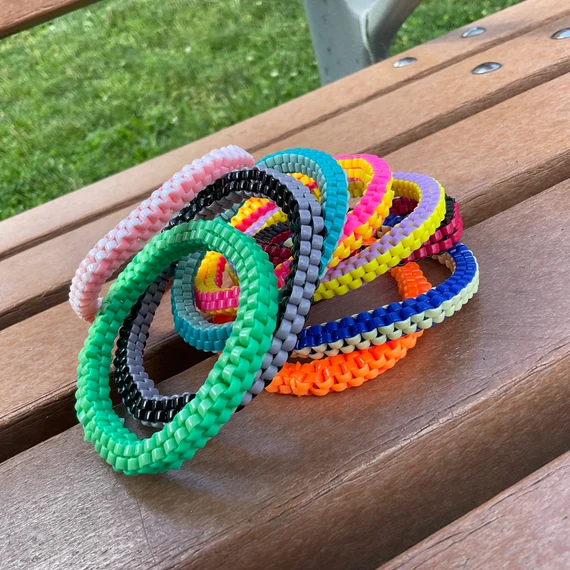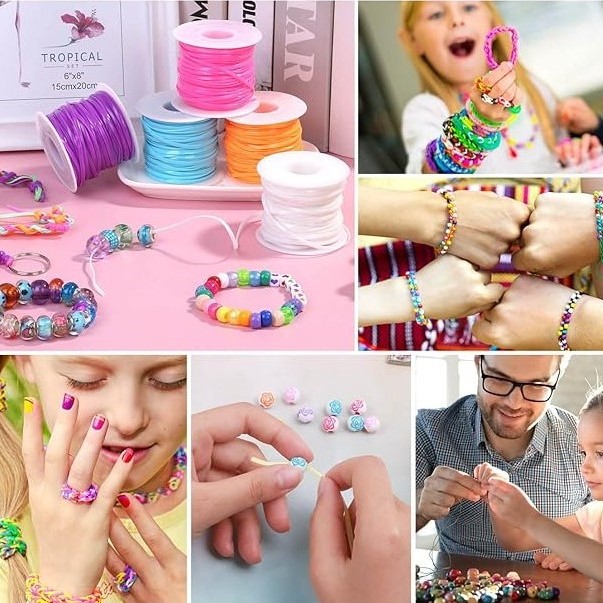Making a lanyard bracelet is a great way to show your creativity and showcase your skills at the same time. With its unique design and functionality, this DIY project is definitely worth a try! In this article, we'll explore the different aspects of how to make a lanyard bracelet, providing you with all the necessary materials and tools, a step-by-step guide for beginners, and some advanced techniques to take your designs to the next level. Let's get started!

A lanyard bracelet is a unique piece of jewelry crafted using different materials, most often nylon, cotton, or satin strands woven together in striking patterns. This creative form of expression allows for endless personalization with the incorporation of beads, charms, and various knotting techniques to develop intricate designs.
Making your own lanyard bracelet is an engaging, creative process that offers several benefits. Not only does it provide a therapeutic way to pass the time, but it also encourages you to express your artistic side. These bracelets are excellent for showcasing your individual style with personalized color palettes, chosen beads, specially-selected charms, and crafted patterns. Moreover, a handmade lanyard bracelet makes a thoughtful, personalized gift for loved ones.
Before we go on to the lanyard bracelet tutorial, let's first gather what we will need. Here are the essential materials and tools to start crafting your own lanyard bracelets:
Looking for an easy option for materials? Try a bracelet kit like the Cridoz Lanyard String Kit and unleash your creativity with its colorful strings! This crafting set is packed with six vibrant shades that promise to revive your cherished childhood memories. Made from soft, durable PVC plastic material, each cord has a bright and toxin-free texture that is environmentally friendly. Ideal for all ages, this kit's 20-yard rolls are perfect for handcrafting unique bracelets, keychains, and more. It's a fun and safe way to bond and create, ensuring that both fun and imagination are woven tightly into every DIY project!

Want to know how do you make lanyard bracelets? Here is a step-by-step guide on how to make one:
For advanced design work, pushing the boundaries of creativity while maintaining practicality is key. Here are some tips and techniques:
In conclusion, creating a lanyard bracelet is not only a fun DIY project but also a way to express your unique style and sense of creativity. With just a few simple materials and following this simple guide on how to make a lanyard bracelet, you can make a cherished keepsake or a thoughtful gift. So, let your imagination run wild, and start weaving your story of skill, flair, and individuality. Your hands hold the promise of countless beautiful creations to come!
Here are some commonly asked questions on how to make a lanyard bracelet.
The easiest lanyard stitch to learn for beginners is the box stitch. It is straightforward and involves intertwining strands in a perpendicular fashion, creating a square or box-like pattern. This stitch requires minimal setup and is a great starting point for those new to lanyard crafting.
Common lanyard sizes typically range in width from 1/2 inch to 1 inch and in length from 36 to 40 inches for a standard adult size.
To ensure your lanyard bracelet is durable and long-lasting, choose high-quality materials such as thick nylon or polyester cord, and tighten all stitches evenly throughout the craft. Moreover, applying a small bead of clear nail polish or fabric glue to the ends of the cord can prevent fraying, extending the life of your bracelet.
Explore what is permanent jewelry, and learn its workings, types, costs, and DIY options, alongside the benefits and considerations for an informed choice.
Read MoreDiscover the authenticity of your gold with these 7 essential tips! Learn how to tell if gold is real with expert insights and safeguard your investments.
Read MoreExplore the art of bracelet restoration with our guide on how to fix a broken bracelet. Discover expert tips and step-by-step solutions for lasting repairs.
Read MoreThis article unveils how to make rainbow loom bracelets effortlessly. Read on and the detailed tutorial is perfect for beginners and seasoned crafters alike.
Read More